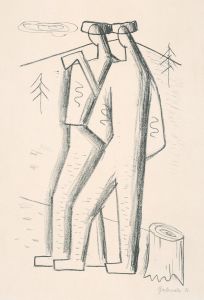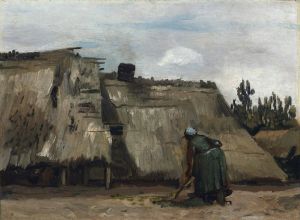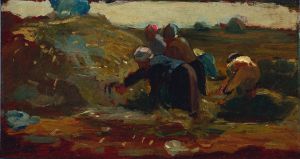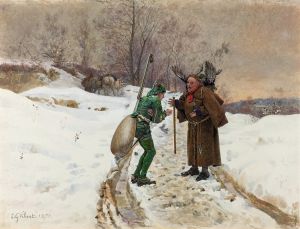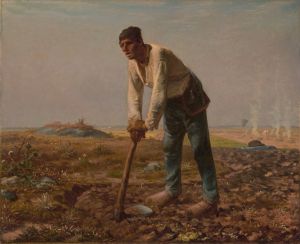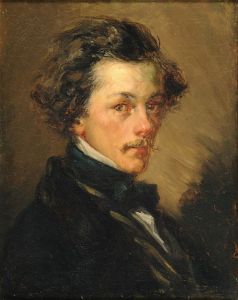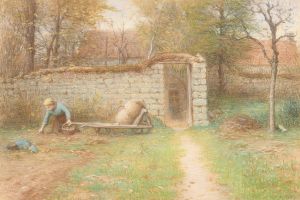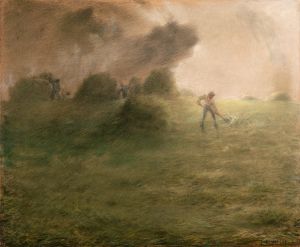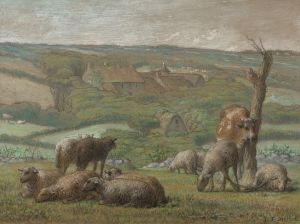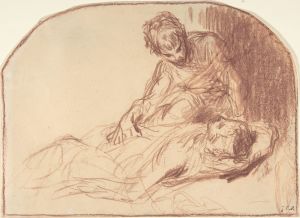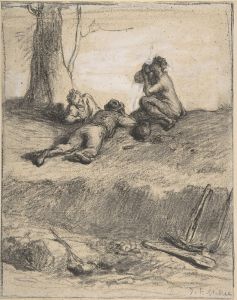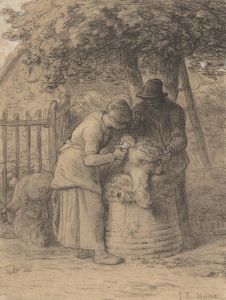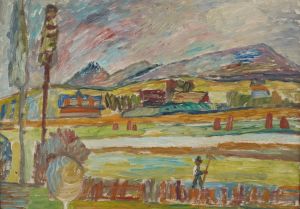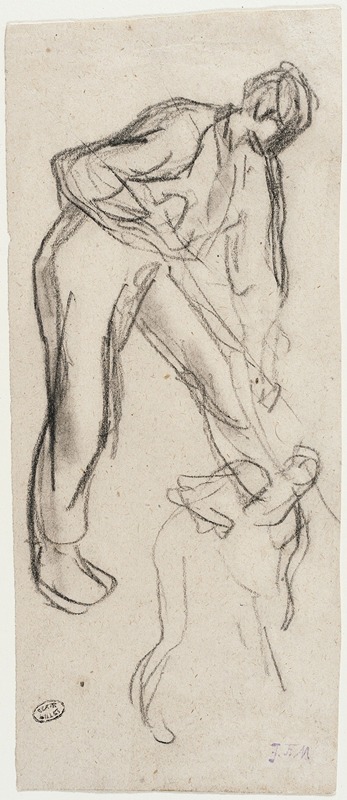
Studies of a Man Digging
A hand-painted replica of Jean-François Millet’s masterpiece Studies of a Man Digging, meticulously crafted by professional artists to capture the true essence of the original. Each piece is created with museum-quality canvas and rare mineral pigments, carefully painted by experienced artists with delicate brushstrokes and rich, layered colors to perfectly recreate the texture of the original artwork. Unlike machine-printed reproductions, this hand-painted version brings the painting to life, infused with the artist’s emotions and skill in every stroke. Whether for personal collection or home decoration, it instantly elevates the artistic atmosphere of any space.
Jean-François Millet, a prominent French painter and one of the founders of the Barbizon School, is renowned for his depictions of rural life and peasant labor. One of his notable works, "Studies of a Man Digging," exemplifies his focus on the dignity and hardship of agricultural workers. Although specific details about this particular study are limited, it is consistent with Millet's broader oeuvre, which often explored themes of manual labor and the human connection to the land.
Millet was born in 1814 in the village of Gruchy, Normandy, into a family of farmers. This background deeply influenced his artistic vision, as he was intimately familiar with the rural lifestyle and the challenges faced by peasants. His works frequently reflect a profound empathy for the working class, capturing the essence of their daily toil with a sense of realism and respect.
"Studies of a Man Digging" is likely a preparatory work or a series of sketches that Millet used to develop his larger compositions. Such studies were common in his practice, allowing him to experiment with form, posture, and the physical exertion of his subjects. These studies were crucial for Millet to accurately portray the anatomy and movement of figures engaged in labor-intensive tasks.
Millet's approach to depicting peasants was revolutionary for his time. During the mid-19th century, the art world was dominated by Romanticism and historical painting, which often idealized subjects or focused on grandiose themes. In contrast, Millet's work was grounded in realism, portraying the everyday lives of ordinary people with authenticity and respect. This focus on the common man was initially met with criticism, as some contemporaries viewed his subjects as too mundane or unworthy of fine art. However, Millet's dedication to capturing the truth of rural life eventually earned him recognition and respect.
The Barbizon School, with which Millet was closely associated, was a group of artists who settled in the village of Barbizon near the Forest of Fontainebleau. They were united by their desire to paint nature and rural scenes directly from life, often working en plein air (outdoors) to capture the changing light and atmosphere. This movement was a precursor to Impressionism and marked a significant shift towards realism in art.
Millet's influence extended beyond his lifetime, impacting later artists such as Vincent van Gogh, who admired Millet's ability to convey the nobility of peasant life. Van Gogh's own works often echoed Millet's themes and compositions, demonstrating the lasting impact of Millet's vision on subsequent generations of artists.
In summary, "Studies of a Man Digging" reflects Jean-François Millet's commitment to portraying the dignity and resilience of rural laborers. Through his meticulous studies and larger compositions, Millet provided a window into the world of 19th-century peasants, challenging contemporary artistic norms and paving the way for future movements that celebrated realism and the beauty of everyday life.





